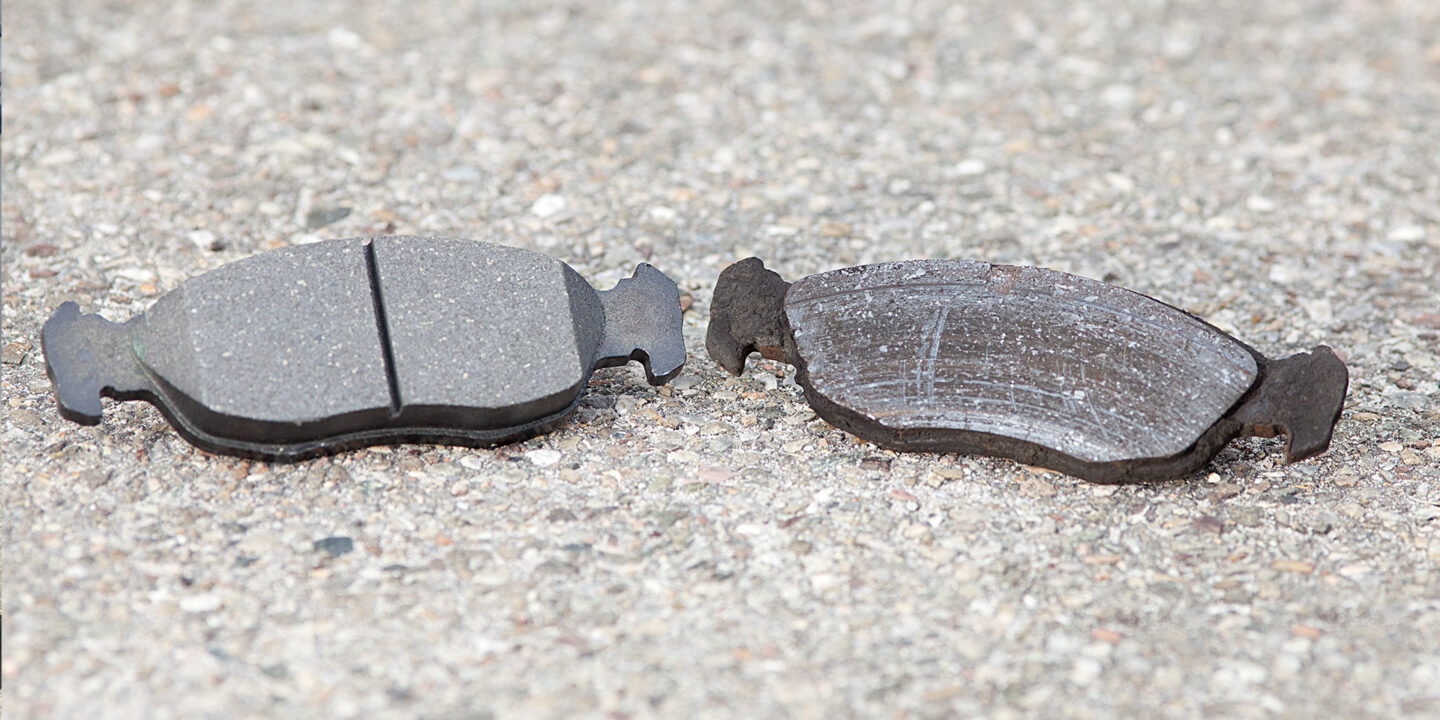- Home
- Fun Autopart
- Semi-Metallic Vs Ceramic Brake ...

Embark on the thrilling journey of automotive upkeep, it’s crucial to make informed decisions, notably about your vehicle’s braking system. One pivotal choice lies between semi-metallic vs ceramic brake pads.
Each type boasts unique traits, offering various perks and trade-offs. Semi-metallic pads, known for their durability and heat resistance, are popular for high-performance vehicles. On the other hand, ceramic brake pads, with their quiet operation and less abrasive nature, are considered the go-to for everyday driving.
Read on for details with DriveRevolve!
Brake Pads: Definition And How To Function
Presumably, Jake brakes and brake pads are the core of your auto’s braking mechanism, creating friction for seamless and dependable halting at each instance.
Unlike drum brake systems, the disc brake system has four main elements:
- Disc brake rotors (or discs)
- Brake pads
- Wheel hubs
- Calipers for your disc brakes
They all function synergistically during any braking action to halt or decrease a moving auto’s momentum.
Via the driver control pedal inputs, the brake pads can bond with the brake rotor and exert pressure or friction accordingly. When stress and friction are applied, the rotor’s turning speed can diminish, sequentially slowing down the vehicle’s velocity.
Besides brake pads, the brake lights may also pique your interest!
Semi-metallic vs Ceramic Brake Pads: How To Tell Them Apart
Semi-metallic Brake Pads

This type runs steady and reliable, rendering them wide-reaching for strenuous driving activities such as track racing, towing heavy weights, and descending steep inclines. They are perfect in extreme driving conditions.
This guy appears more resistant to brake fade since it conducts heat well, keeping the brake system cooler and lasts the system longer.
The friction materials often contain high amounts of metal, like steel wool, copper, iron, and other composite alloys.
While these brake pads possess a pretty sound service life, it falls short compared to the longevity of ceramic brake pads due to the wear they inflict on the brakes. A side effect of their use is that semi-metallic brake pads generate more dust and sound.
Using this, you have to check the brake rotors more often for thinning as well, as they seem aggressive on your rotors.
Ceramic Brake Pads

Ceramic, a material typically associated with pottery crafting, is also popular in manufacturing ceramic brake pads. This first came to life in the 1980s. Rather than organic ones on most new vehicles, ceramic ones offer an enhanced tolerance for varied driving and climatic conditions.
They come with a dense ceramic compound (looks like pottery) with embedded and fine copper fibers or even other metallic materials. They all boost heat conductivity and friction.
They’reThey’re flawless for regular urban commuting. Unlike semi-metallic brake pads coming at a lower price point with noise day by day, the ceramic versions promise even superior durability and quieter operation and minimize dust generation.
Even so, these items possess less cold bite than their components (above) and do not absorb heat that well. Such stuff makes them low in freezing temperatures or transfers more heat to the system. Yeah, no one likes that!
Let this brief video enlighten the differences between these two choices with particular pros and cons:
Ceramic vs Semi-Metallic Brake Pads –What’s the Difference? ( Pros and Cons of Each) – YouTube
FAQs
What Is The Anatomy Of A Brake Pad?
There are four basic elements of the brake pads:
1. Friction Element
2. Intermediary Layer
3. Glue Component
4. Support Plate
5. Shim Part
What Are Brake Pads Made Of?
Regarding the advantage of current technological developments, there are three main types of brake pads: organic materials, semi-metallic or metallic versions, and ones crafted from ceramic.
If you catch sight of uneven wear on brake pads, about time! Change the ones with are most suitable for your needs!
What Are Organic Brake Pads?
Most new cars in the US use organic brake pads, which provide reliable stopping power for commuting and leisure driving. Because they are silent, less dusty, and don’t don’t harm the rotors as much, they are offered at affordable prices and increase their longevity.
What Is The Best Brake Pad Material?
Getting the best materials is up to your specific needs. Semi-metallic materials are adept at managing heavy-duty applications. Meanwhile, hybrid brakes are worth it for something straddling durability and heat resistance.
Conversely, ceramic pads fit you most if your braking requirements are relatively lighter.
Key Takeaways!
Semi-metallic vs Ceramic brake pads comparison enlightens the significant differences between the two. No matter what, the decision is up to you. Well, the semi-metallic can win the game if all you head for heat assistance and overall driving experience.
But the opposite is true if your mind pops up the sound-free operation and dust production drop.
After that, shop around to get the best deal before purchasing one. About time! Open the whole new automatic threshold and feel the vibe.
Perhaps, a series of good reads about the Fun Autopart are waiting for you! Navigate yourself to the next article!
Click to rate this post!
[Total: 1 Average: 5]

